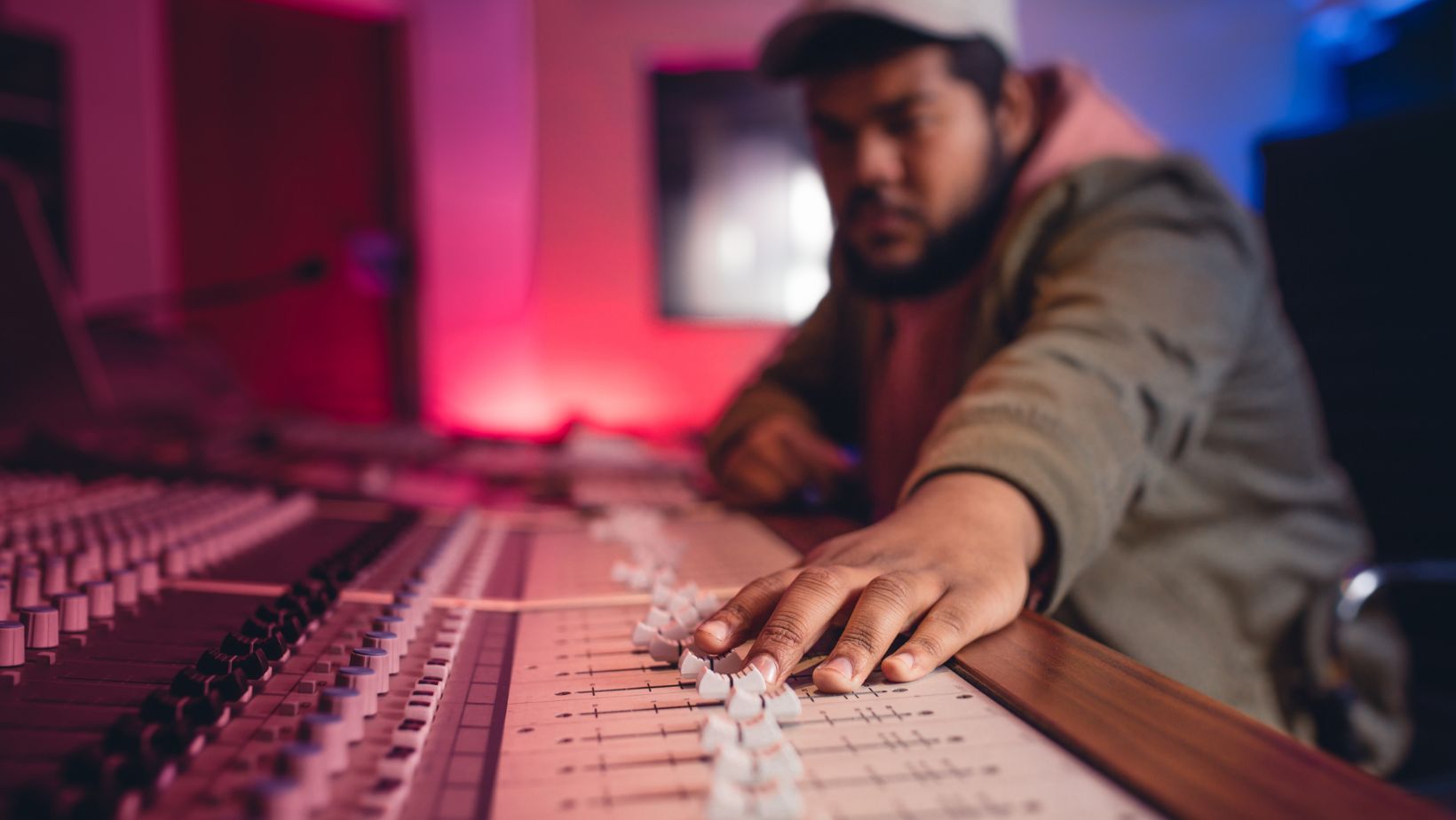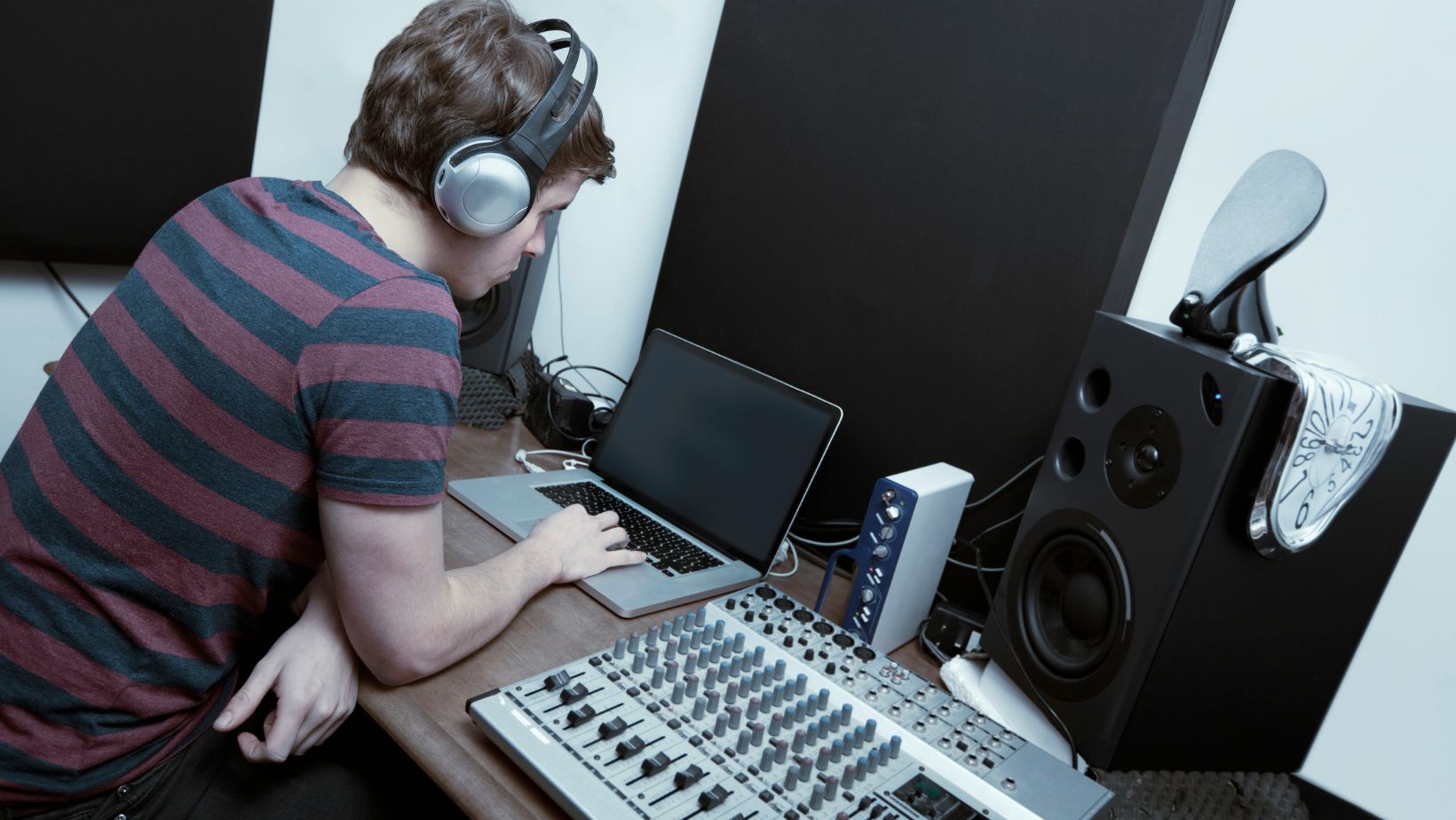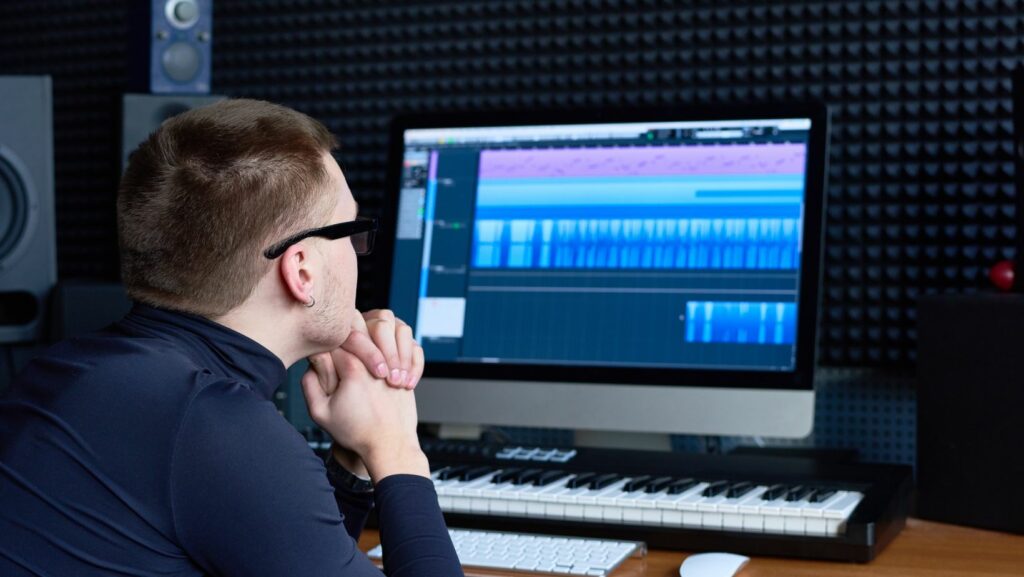In the cacophony of today’s music scene, the ability to carve out a unique sound is a coveted skill. Music production isn’t just about hitting the right notes; it’s about creating a symphony that resonates with listeners. This article will delve into the art of music production, offering insights for beginners and seasoned musicians alike.
So, let’s embark on this harmonious journey together, unraveling the secrets of music production and helping you hit the high notes in your musical career.
Learn Music Production

Diving into music production demands a comprehensive understanding of fundamental concepts. These basics cover key aspects in the realms of sound engineering, songwriting, mixing, and mastering tracks.
Sound engineering serves as the backbone of any music production journey. It deals with recording, mixing, and reproducing sounds. From selecting the right audio cables to understanding the nuances of sound frequency, a good grasp of sound engineering contributes to producing high-quality music.
Mastering Songwriting
Songwriting acts as the birthplace of music creation. It’s where musicians weave a story with rhythm and melodious tunes. Embracing songwriting skills enables musicians to curate original music with emotional substance.
Navigating Mixing
Mixing is the playground for diverse sounds, where individual elements harmoniously come together to create a compelling auditory experience.
Embracing Mastering
Mastering makes a track market-ready. It’s all about polishing a mixed track to ensure it’s sonically cohesive and translates well across different sound systems.
Following these four rudimentary steps illuminates the path to proficient music production, establishing a solid base and paving the way for creative exploration.
Setting Up a Home Studio

Fueling the music production process, a well-equipped home studio serves as a musician’s creative sanctuary. It’s a space where both seasoned professionals and budding talent process their sonic concepts into composed tunes. In this setup, two core aspects take precedence – the equipment used and the environment refined.
Selecting the right equipment forms the crux of crafting sonic brilliance. It typically includes digital audio workstations, studio monitors, headphones, audio interfaces, and microphones. For example, a professional-level digital audio workstation allows precise audio editing, while quality studio monitors deliver accurate sound reproduction.
A acoustically designed environment, on the other hand, can enhance the accuracy of sound recording and playback. It mainly deals with room acoustics, noise control, and setting up the studio in a quiet, distraction-free area.
Recording Techniques

Refining music production skills transcends just equipping a home studio with optimal equipment. Developing proficiency in recording techniques is a key element that musicians shouldn’t overlook. From mic placements to soundproofing the recording room, mastering these techniques greatly enhances the quality of recorded tracks. For instance, Multipurpose use of a room, affects the sound. Proper angling and distancing the mic from the sound source ensure accurate sound capture. Similarly, incorporating reflection filters prevents external noises from polluting the audio. Furthermore, balancing the levels when recording multiple tracks simultaneously is known as mixing. Poor mixing can overly emphasize or dampen the audio creating an imbalanced sound. Thus, understanding recording techniques is a crucial milestone in the journey of learning music production.
Mixing and Mastering
Through this article, it’s clear that mastering the art of music production is no small feat. It’s a journey that begins with understanding sound engineering basics, progresses through learning songwriting, and culminates in mixing and mastering tracks. The importance of a well-set home studio can’t be overstated. It’s your creative sanctuary, equipped with the right tools for proficient music production. An acoustically designed environment enhances sound recording accuracy, a critical factor in achieving a unique sound. The nuances of recording techniques, such as mic placements, soundproofing, and mixing tracks, are pivotal to improving the quality of recorded music. As you venture deeper into the world of music production, remember that the key to success lies in consistent practice, continuous learning, and an unwavering passion for creating unique, balanced sounds.

